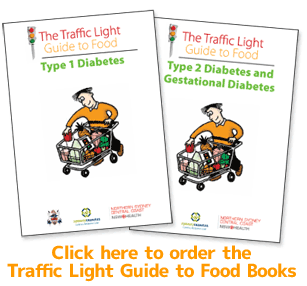Kilojoules (or calories)
Kilojoules are a measure of the energy or fuel available in a food. The fat, protein, carbohydrate and alcohol that is eaten and drunk provides the body with energy in the form of kilojoules.
Food energy is essential for life, however too much food energy contributes to weight gain and can cause blood glucose levels to rise. For good management of diabetes it is important to have an appropriate intake of food energy.
Carbohydrates or ‘carbs’ 1,2,3
Carbohydrate foods are essential to provide glucose for energy. Carbohydrate foods can also be important sources of fibre, vitamins and minerals. If you avoid carbohydrate foods then you can miss out on these nutrients. You can also feel tired and run down.
By definition, ‘carbs’ include bread, rice, pasta, grains, sweet potato and white potato, corn, breakfast cereals, dried peas, dried beans and lentils, fruit, milk, yoghurt, custard, ice cream, biscuits, cakes, chocolate, sugar, honey, jam, confectionery, soft drink, cordial and juice.
All carbohydrates (both sugars and starches) break down to glucose. Glucose is used by your body for energy. Your body needs a constant supply of this energy just like a car requires a constant supply of petrol. Carbohydrate, eaten regularly, is the best fuel for your body.
People often ask ‘how much carbohydrate is needed?’, ‘when do I need it?’ and ‘what sort of carbohydrate foods are best for me? ’
Order the printed version of the Traffic Light Guide to Food, or download the e-Book version to find out more.









